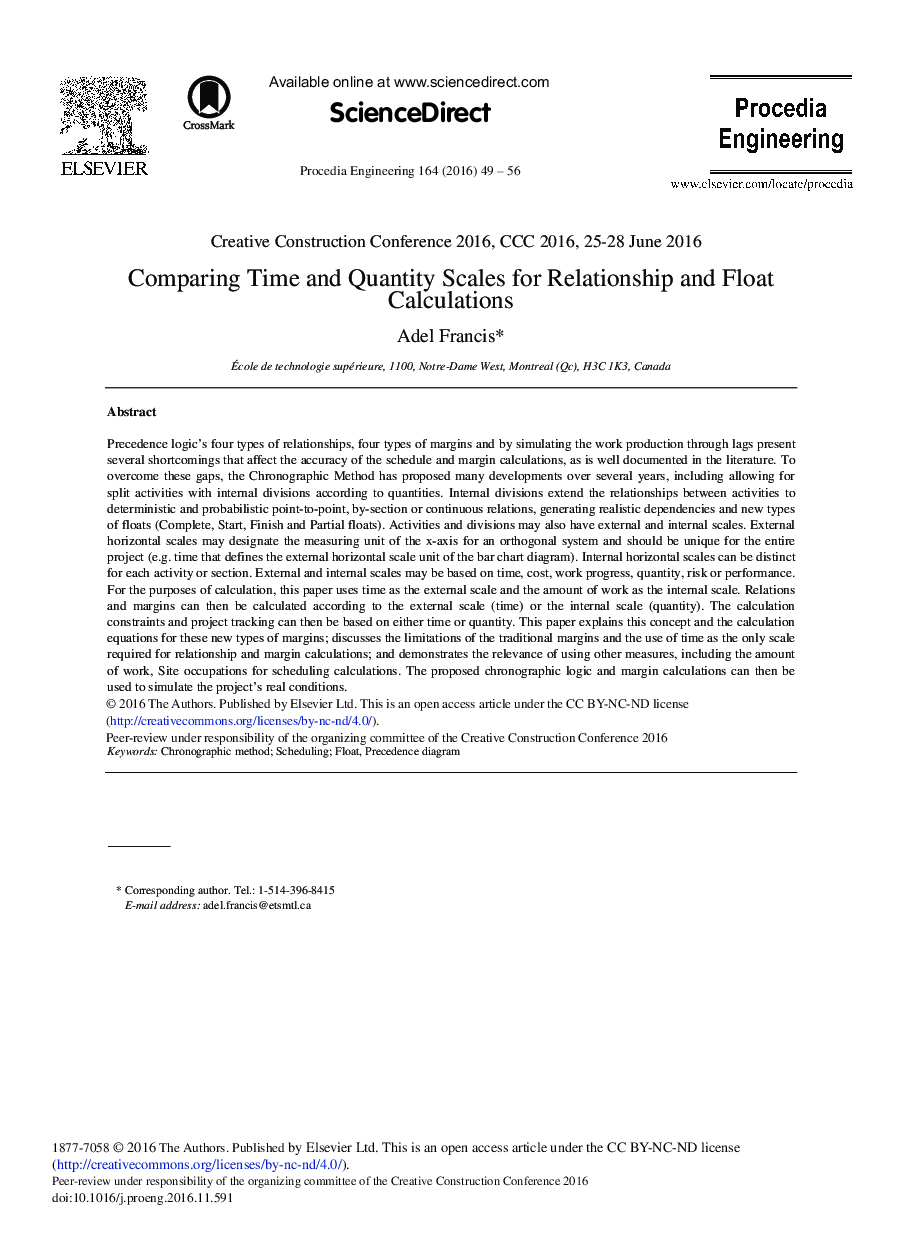| Article ID | Journal | Published Year | Pages | File Type |
|---|---|---|---|---|
| 5029454 | Procedia Engineering | 2016 | 8 Pages |
Precedence logic's four types of relationships, four types of margins and by simulating the work production through lags present several shortcomings that affect the accuracy of the schedule and margin calculations, as is well documented in the literature. To overcome these gaps, the Chronographic Method has proposed many developments over several years, including allowing for split activities with internal divisions according to quantities. Internal divisions extend the relationships between activities to deterministic and probabilistic point-to-point, by-section or continuous relations, generating realistic dependencies and new types of floats (Complete, Start, Finish and Partial floats). Activities and divisions may also have external and internal scales. External horizontal scales may designate the measuring unit of the x-axis for an orthogonal system and should be unique for the entire project (e.g. time that defines the external horizontal scale unit of the bar chart diagram). Internal horizontal scales can be distinct for each activity or section. External and internal scales may be based on time, cost, work progress, quantity, risk or performance. For the purposes of calculation, this paper uses time as the external scale and the amount of work as the internal scale. Relations and margins can then be calculated according to the external scale (time) or the internal scale (quantity). The calculation constraints and project tracking can then be based on either time or quantity. This paper explains this concept and the calculation equations for these new types of margins; discusses the limitations of the traditional margins and the use of time as the only scale required for relationship and margin calculations; and demonstrates the relevance of using other measures, including the amount of work, Site occupations for scheduling calculations. The proposed chronographic logic and margin calculations can then be used to simulate the project's real conditions.
